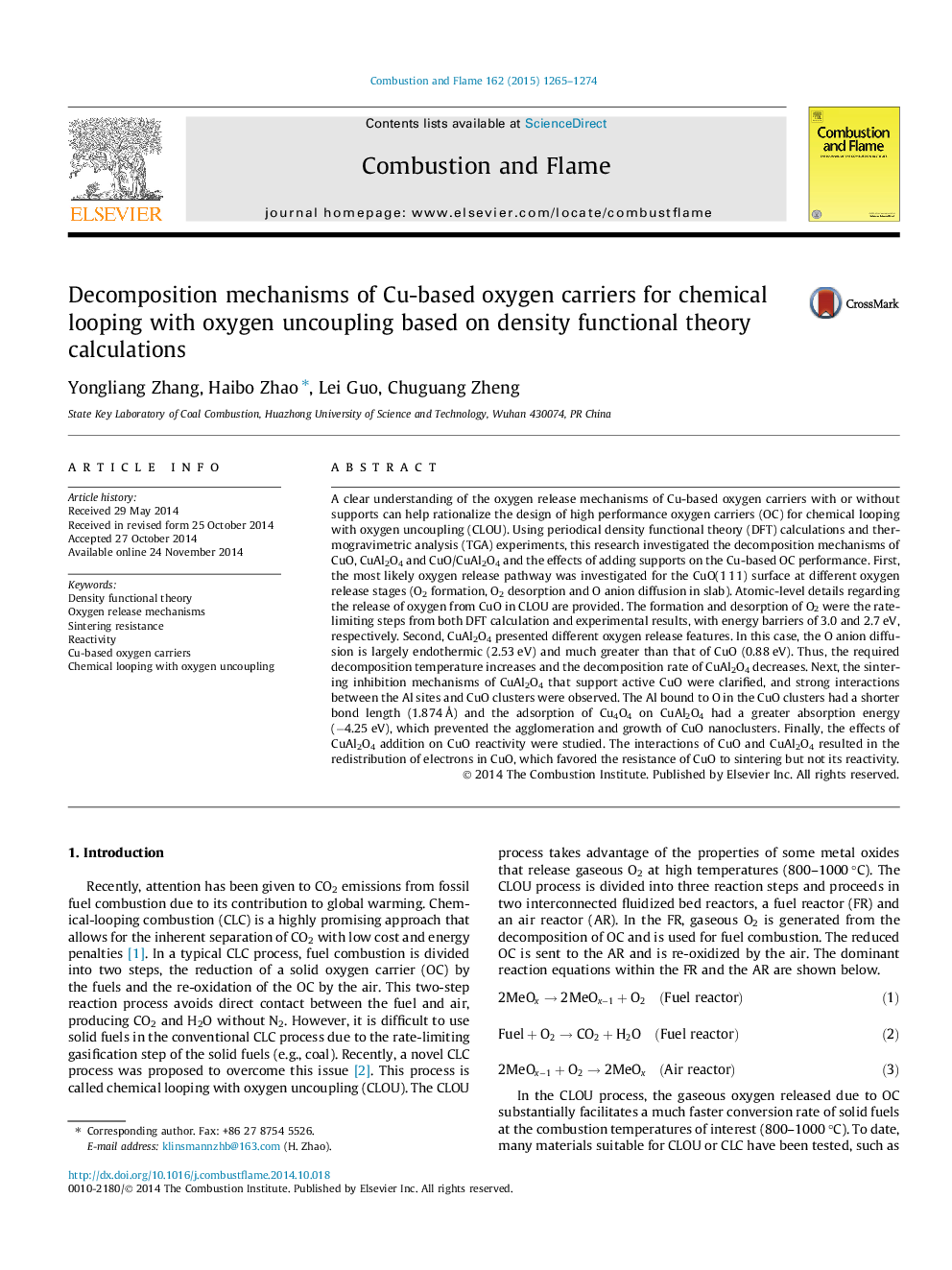| Article ID | Journal | Published Year | Pages | File Type |
|---|---|---|---|---|
| 168755 | Combustion and Flame | 2015 | 10 Pages |
A clear understanding of the oxygen release mechanisms of Cu-based oxygen carriers with or without supports can help rationalize the design of high performance oxygen carriers (OC) for chemical looping with oxygen uncoupling (CLOU). Using periodical density functional theory (DFT) calculations and thermogravimetric analysis (TGA) experiments, this research investigated the decomposition mechanisms of CuO, CuAl2O4 and CuO/CuAl2O4 and the effects of adding supports on the Cu-based OC performance. First, the most likely oxygen release pathway was investigated for the CuO(1 1 1) surface at different oxygen release stages (O2 formation, O2 desorption and O anion diffusion in slab). Atomic-level details regarding the release of oxygen from CuO in CLOU are provided. The formation and desorption of O2 were the rate-limiting steps from both DFT calculation and experimental results, with energy barriers of 3.0 and 2.7 eV, respectively. Second, CuAl2O4 presented different oxygen release features. In this case, the O anion diffusion is largely endothermic (2.53 eV) and much greater than that of CuO (0.88 eV). Thus, the required decomposition temperature increases and the decomposition rate of CuAl2O4 decreases. Next, the sintering inhibition mechanisms of CuAl2O4 that support active CuO were clarified, and strong interactions between the Al sites and CuO clusters were observed. The Al bound to O in the CuO clusters had a shorter bond length (1.874 Å) and the adsorption of Cu4O4 on CuAl2O4 had a greater absorption energy (−4.25 eV), which prevented the agglomeration and growth of CuO nanoclusters. Finally, the effects of CuAl2O4 addition on CuO reactivity were studied. The interactions of CuO and CuAl2O4 resulted in the redistribution of electrons in CuO, which favored the resistance of CuO to sintering but not its reactivity.
